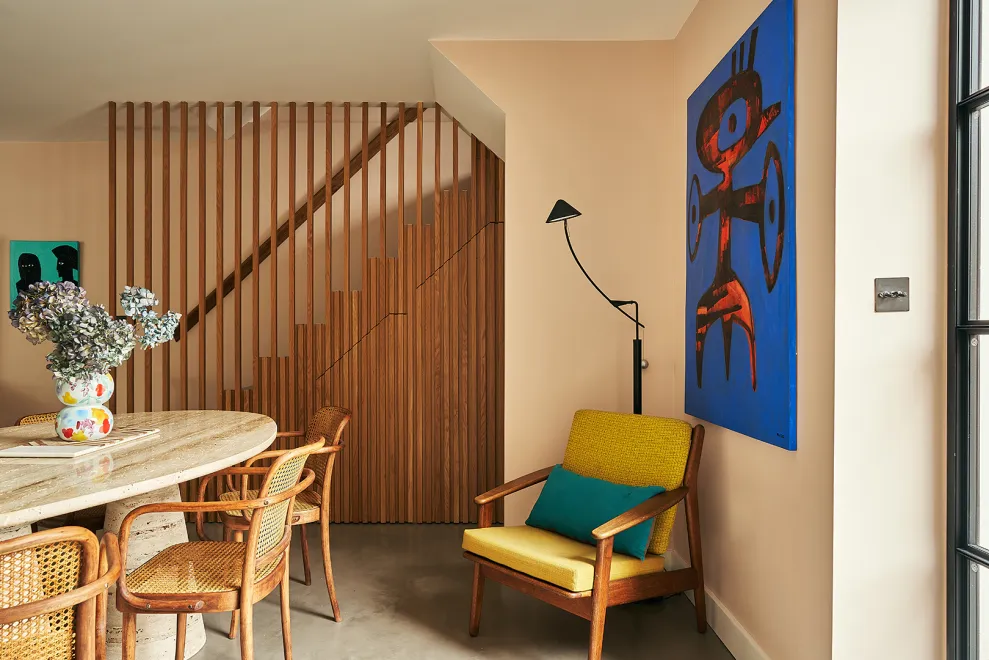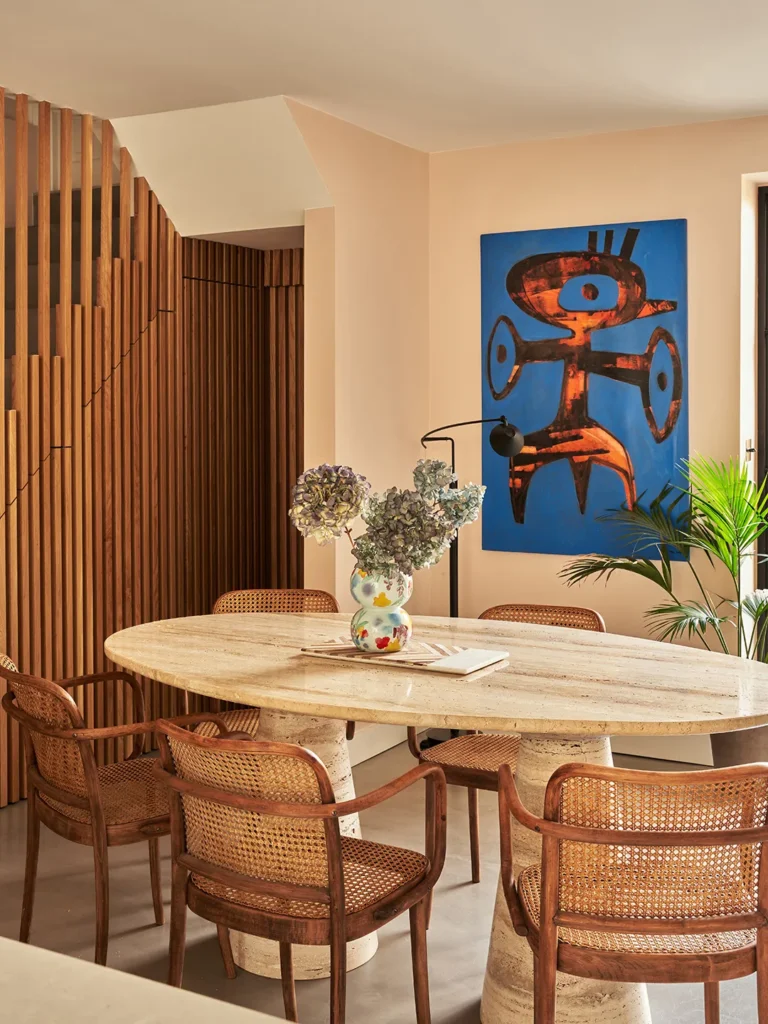In a world often obsessed with fast furniture and fleeting trends, some spaces offer a compelling counterpoint—spaces where time doesn’t just pass, but settles in. The London home of Sandrine Zhang Ferron, founder of the vintage design platform Vinterior, is exactly that kind of space. It’s not just a house, but a living gallery of decades past, where furniture from multiple eras coexist in quiet harmony.
Rather than picking a single design period or aesthetic lane, Zhang Ferron embraces a more fluid philosophy: every era has something beautiful to offer. Her approach is guided not by strict rules, but by feeling, balance, and the joy of rediscovery. The result? A home that feels curated but never cold, collected but never cluttered—a thoughtful mosaic of vintage soul.
A Passion for the Past

For Zhang Ferron, vintage furniture isn’t just about nostalgia; it’s about narrative. “Each piece has a story,” she often says, and her home is living proof. From mid-century sideboards to postmodern chairs and antique light fixtures, every item holds a memory, a maker, a moment in time. Her living room might feature a 1970s velvet sofa set alongside a French Art Deco lamp, while a sculptural Italian table from the 1980s finds its place next to a Victorian cabinet.
This philosophy is at the heart of Vinterior, the online marketplace she launched to help others access and enjoy timeless design. Vinterior champions everything from brutalist oak dressers to Bauhaus-inspired desks, connecting people with unique pieces that reflect craftsmanship, history, and personality. In Zhang Ferron’s own home, that vision reaches full expression.
A Home That Evolves
The beauty of mixing vintage lies in its fluidity. Zhang Ferron doesn’t decorate by matching but by layering. She builds her rooms slowly, allowing them to evolve over time. There’s no “final look” or rigid plan—just a series of collected decisions, guided by instinct and anchored in authenticity.
Her home doesn’t scream for attention. Instead, it invites quiet discovery. A 1960s Danish armchair may sit unobtrusively in the corner, its walnut frame warmed by years of use. Nearby, a minimalist light fixture from the 2000s adds contrast without clashing. The juxtaposition isn’t accidental—it’s intentional but unforced, a dialogue between forms, finishes, and eras.
The layering also reflects her view that homes are living things, not showpieces. She rearranges frequently, moves items from room to room, and makes space for new discoveries. The home is dynamic—a personal museum where the exhibits are loved, lived with, and sometimes let go.
Embracing Imperfection
Part of the charm of Zhang Ferron’s style is her embrace of imperfection. Vintage pieces often bear the marks of time—scratches, worn edges, patinas that can’t be replicated. Rather than hide them, she celebrates them. “The wear tells a story,” she says. “It reminds you that something was made, used, appreciated.”
This openness to imperfection gives her space a relaxed, human quality. It’s not precious; it’s personal. Even her more refined pieces are softened by the casual confidence of the surrounding décor. Nothing feels overly designed, and everything feels like it belongs.
Sustainability in Style

Beyond aesthetics, there’s a deeper motivation behind Zhang Ferron’s choices: sustainability. In a consumer culture that often values newness over longevity, she champions furniture with staying power. Vintage, by nature, is the most sustainable design choice—rescued from landfills, repurposed for new lives.
Her home is a quiet but powerful argument against throwaway living. It shows that sustainability doesn’t have to mean sacrifice. It can be beautiful, intentional, and deeply stylish. Each reused piece stands as a small act of resistance—a gesture toward a slower, more mindful way of living.
A Personal Palette
Despite the diversity of styles and periods, Zhang Ferron’s home never feels chaotic. One reason is her strong sense of palette. She leans into earth tones, natural textures, and muted hues—colors that ground the space and allow the form of each piece to shine. Wood grain, brass accents, worn leather, soft textiles—all contribute to a cohesive atmosphere.
This restraint gives her the freedom to be adventurous with form. Bold silhouettes, asymmetrical lines, and unexpected pairings can exist peacefully because the overall color story is calm and cohesive.
Lessons for the Rest of Us
Zhang Ferron’s home offers more than visual inspiration—it provides a mindset. It invites us to move beyond Pinterest-perfect decorating and toward something richer and more personal. To find beauty not just in the pristine, but in the well-loved. To see furniture not as filler, but as artifacts. To stop chasing trends and start building a home that grows with us.
You don’t need a design degree or a century-old townhouse to adopt this ethos. Start with one piece that speaks to you. Learn its story. Let it guide the mood of a room. Over time, let your space evolve. Mix eras. Take risks. Reuse. Rearrange. Repeat.
In doing so, you just might discover what Zhang Ferron already knows: that a home filled with stories never goes out of style.

